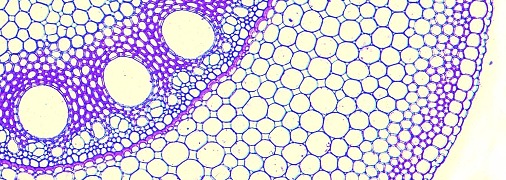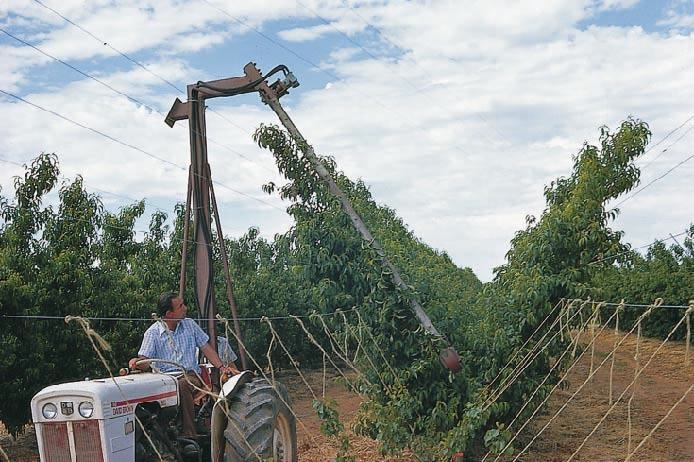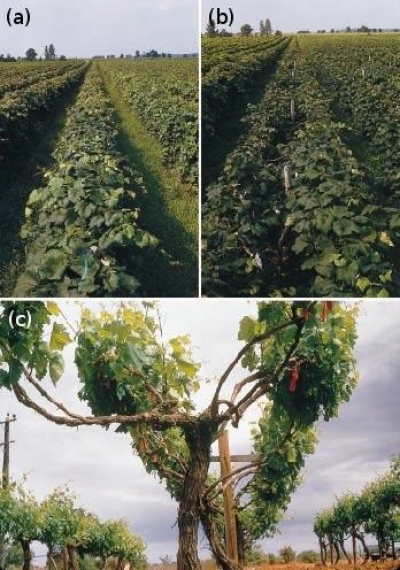Compared to annual crops or plantation forests, perennial horticultural fruit crops offer wide flexibility in the physical arrangement of their canopies in space. Not only can the size and shape of the canopy be dramatically altered by spacing, pruning and training, but the canopy can be physically constrained by a support structure of posts and wires into various forms, for example the V shape of the Tatura peach trellis (Figure 12.27; van den Ende et al. 1987). Pruning of grapevines takes a variety of divided canopy forms (Figure 12.28).
In many of these cases, large changes in canopy form have been developed because of the availability or the possibility of machine harvesting. Changes in canopy management have accompanied machine improvement, recognising that sustainable cropping calls for horticultural rather than engineering solutions. With some perennial fruit crops, for example apple and pear, dwarfing rootstocks provide an alternative means of constraining canopy volume.
Plants in Action
A resource for teachers and students of plant science
 |

